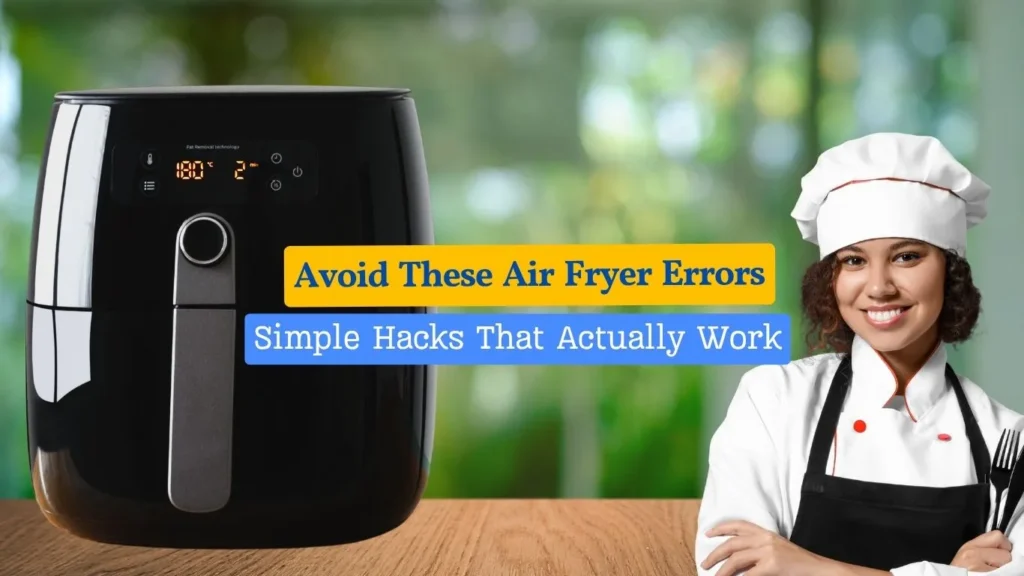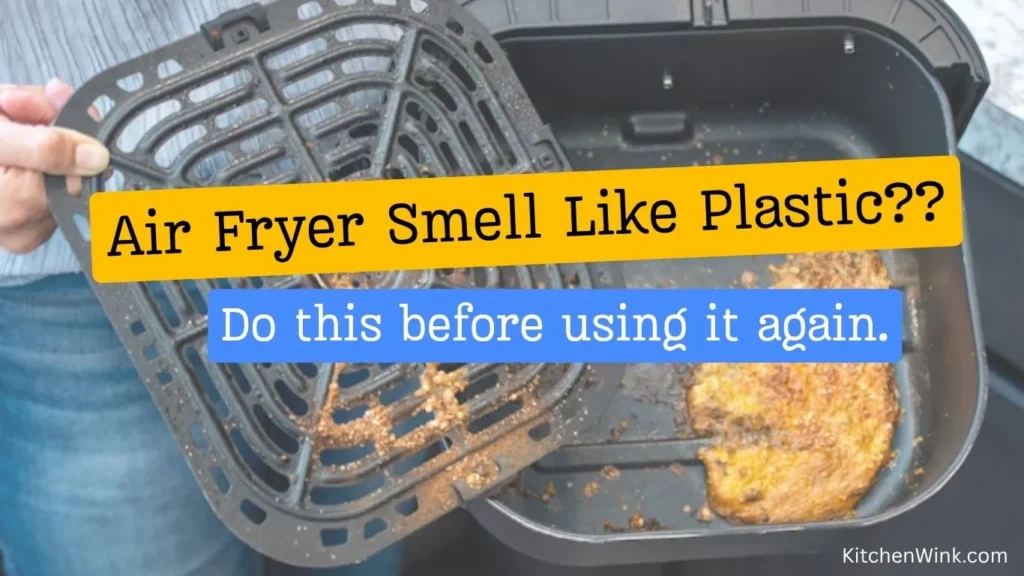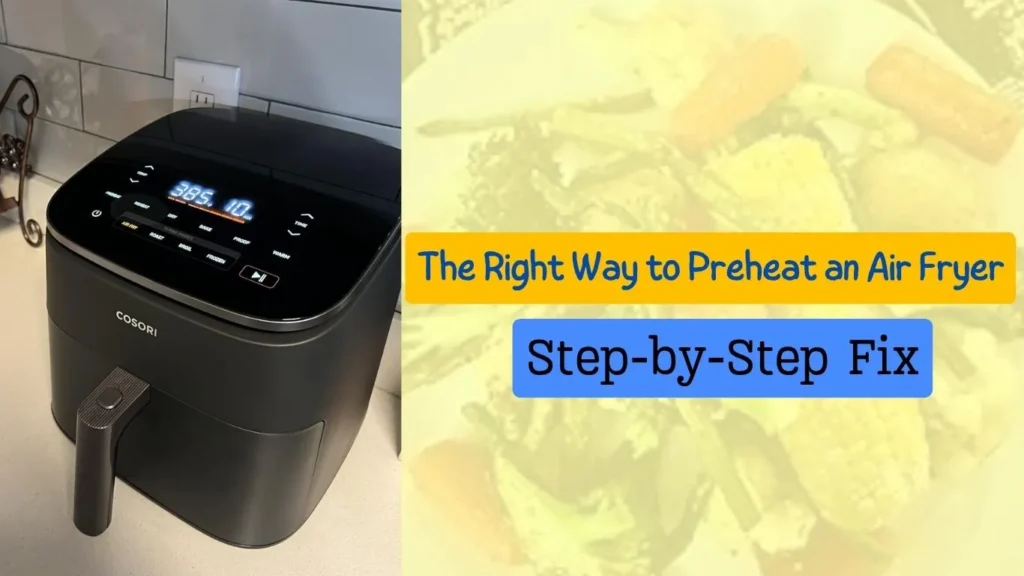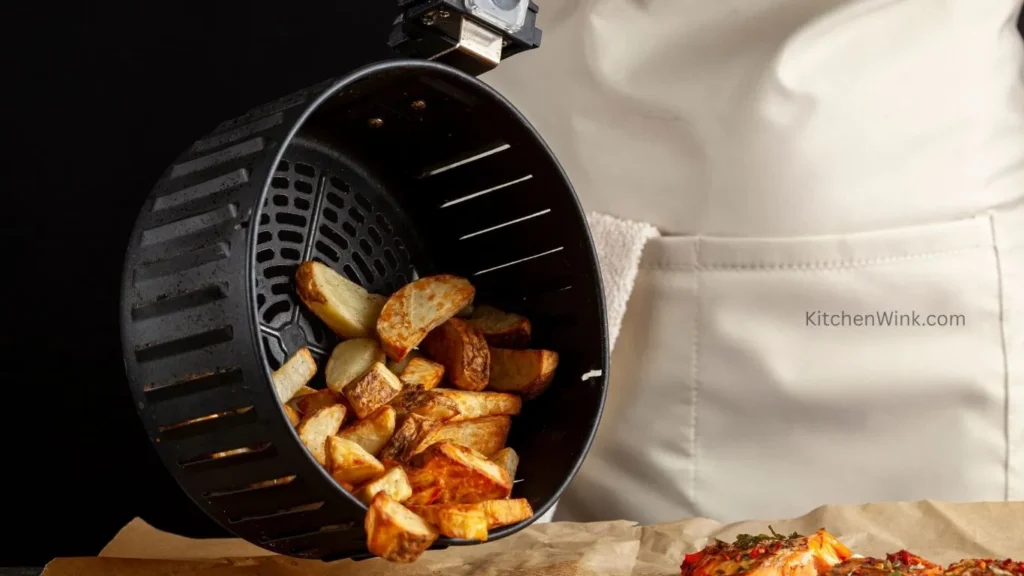Are you wondering if you can put a ceramic bowl in your air fryer? It’s a common question because ceramic dishes look perfect for cooking and serving tasty meals.
But before you toss that favorite bowl into the basket, you need to know if it’s safe and how it might affect your cooking. Keep reading to find out what happens when ceramic meets hot air frying, and how to use your air fryer like a pro without risking damage to your dishes or your appliance.
This simple tip could save you time, money, and frustration!
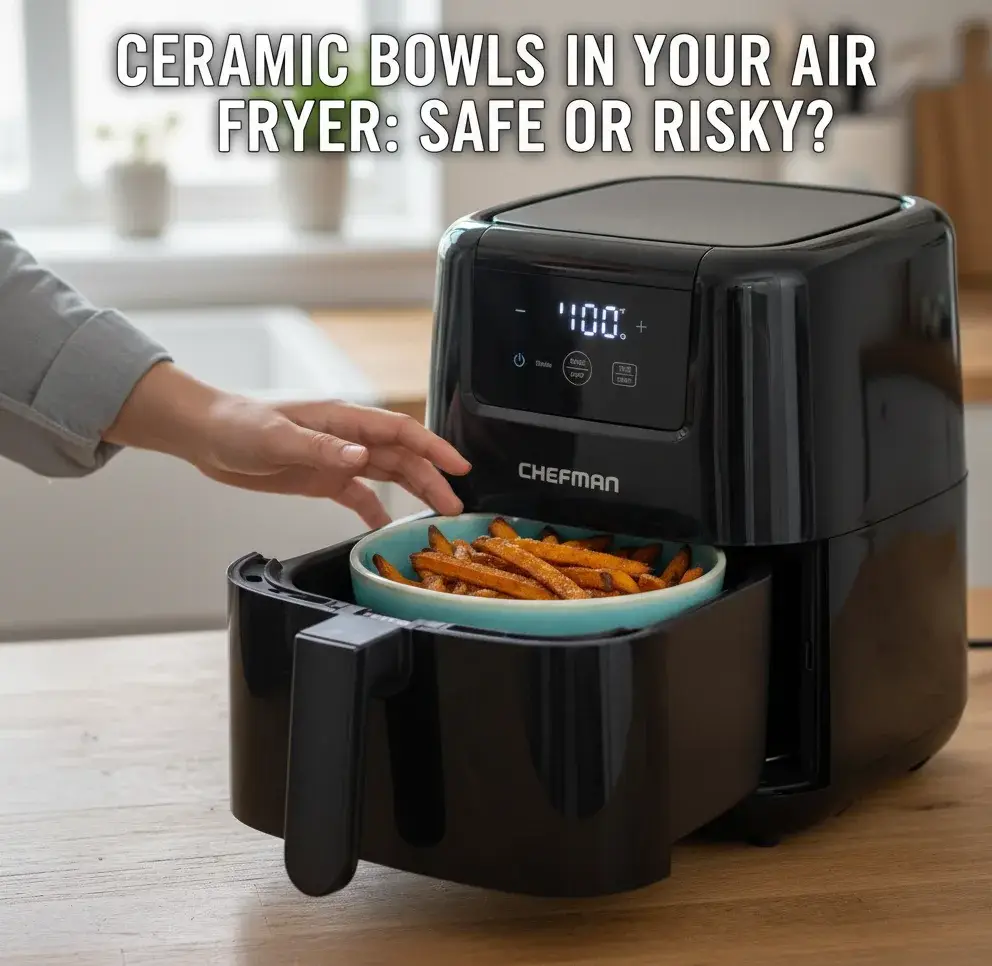
Air Fryer Basics
An air fryer cooks food by blowing hot air fast around it. This makes food crispy without using much oil, which is one reason why an air fryer is healthy. The basket inside holds the food while air moves all around.
Most air fryer baskets are made from metal or non-stick materials. These materials handle heat well and let air flow easily. Some people want to use other containers like ceramic bowls.
| Material | Safe for Air Fryer? | Notes |
|---|---|---|
| Metal (steel, aluminum) | Yes | Heats quickly, durable |
| Non-stick coated | Yes | Easy to clean, good heat flow |
| Ceramic | Sometimes | Must be labeled oven-safe, avoid sudden temperature changes |
| Plastic | No | Melts, unsafe |
| Glass | Sometimes | Use only heatproof glass |

Credit: jinhuaceramic.com
Are Ceramic Bowls Heat-Safe for Air Fryers?
Ceramic bowls can handle heat well. Most ceramics resist heat up to 400-500°F. This makes many ceramic bowls safe for air fryers. But some ceramics might crack if exposed to quick temperature changes.
There are different types of ceramic bowls. Glazed ceramics have a smooth, glass-like surface. They usually hold heat better. Unglazed ceramics are more porous and can absorb water. This can cause cracking in an air fryer.
Some ceramics are made for cooking and are very strong. Others are decorative and not heat-safe. Always check if your ceramic bowl says oven-safe or microwave-safe. These labels often mean the bowl can handle the air fryer heat.
Safety Factors to Consider Before Using Ceramic in an Air Fryer
Using a ceramic bowl in an air fryer can have risks. Ceramic may crack or break from sudden heat changes. Some ceramics are not heat-safe for air fryer temperatures.
Check the manufacturer guidelines before use. Many ceramic bowls are labeled microwave safe, but not all are good for air fryers. Air fryers reach higher temperatures than microwaves.
| Factor | Details |
|---|---|
| Heat Resistance | Ceramics must handle high heat without cracking. |
| Manufacturer Guidance | Follow instructions for safe cookware use. |
| Air Fryer Temperature | Can be higher than other kitchen appliances. |
| Potential Damage | Thermal shock may cause breakage. |

How to Safely Use Ceramic Bowls in an Air Fryer
Choose a ceramic bowl labeled oven-safe or heat-resistant. These bowls can handle high heat without cracking. Avoid thin or delicate ceramic bowls as they may break easily. Bowls with cracks or chips are not safe for air fryer use.
Always check the maximum temperature limit on the bowl. Most air fryers heat up to 400°F (204°C). Bowls must withstand this heat to avoid damage.
Place the ceramic bowl on the air fryer basket or tray carefully. Make sure it fits without touching the heating element. Leave space for air to circulate around the bowl for even cooking.
Do not use bowls with metal trims or decorations. These can cause sparks or damage the air fryer. Avoid sudden temperature changes, like putting a cold bowl into a hot air fryer.
Best Alternatives to Ceramic Bowls in an Air Fryer
Metal bowls are a great choice for air fryers. They heat up fast and last long. They also help cook food evenly. Silicone bowls are flexible and safe for high heat. They won’t break or crack like ceramic can. Plus, silicone is easy to clean and dishwasher safe.
Metal bowls are best for foods that need a crispy edge. Silicone bowls work well for soft or sticky dishes. Both materials are lightweight, making them easy to handle inside the air fryer.
| Material | Benefits | Best Use |
|---|---|---|
| Metal | Heats quickly, durable, even cooking | Crispy foods, roasting |
| Silicone | Flexible, heat safe, easy to clean | Soft foods, sticky dishes |
Frequently Asked Questions
Can I Safely Use A Ceramic Bowl In An Air Fryer?
Yes, ceramic bowls that are oven-safe can usually be used safely in an air fryer.
Will A Ceramic Bowl Break In The Air Fryer?
Ceramic bowls can crack if they are not heat-resistant or if they have sudden temperature changes.
What Type Of Ceramic Bowl Is Best For Air Fryers?
Use a heatproof, oven-safe ceramic bowl without cracks or decorations that may melt.
Can Ceramic Bowls Handle The High Heat Of Air Fryers?
Oven-safe ceramic bowls can handle air fryer heat, usually up to 450°F (232°C).
How To Know If A Ceramic Bowl Is Air Fryer Safe?
Check the label or manufacturer instructions to confirm if the ceramic bowl is oven-safe.
Can I Put Cold Ceramic Bowls Directly Into A Hot Air Fryer?
Avoid placing cold ceramic bowls into a hot air fryer to prevent cracking.
Does Using Ceramic Bowls Affect Air Fryer Cooking Time?
Using ceramic bowls may slightly increase cooking time due to slower heat transfer.
Final Verdict: Can I Put a Ceramic Bowl in the Air Fryer?
Ceramic bowls can be safe in air fryers if they are oven-safe. Check the bowl’s label before use. Avoid bowls with cracks or decorations that might chip. Always place the bowl carefully to allow air flow. Using the right bowl helps cook food evenly.
Avoid sudden temperature changes to prevent cracking. With proper care, ceramic bowls can be a useful air fryer tool. Keep safety in mind and enjoy tasty meals. Simple steps make cooking easier and safer.

Hi, I’m Raju Dey — a food lover with a degree in Culinary Arts from El Centro College. I’ve spent 4+ years testing air fryers, blenders, and other kitchen tools in real home kitchens. At KitchenWink.com, I share honest tips and reviews to help you cook smarter. My goal is to give you advice you can trust — based on hands-on experience, not hype.

